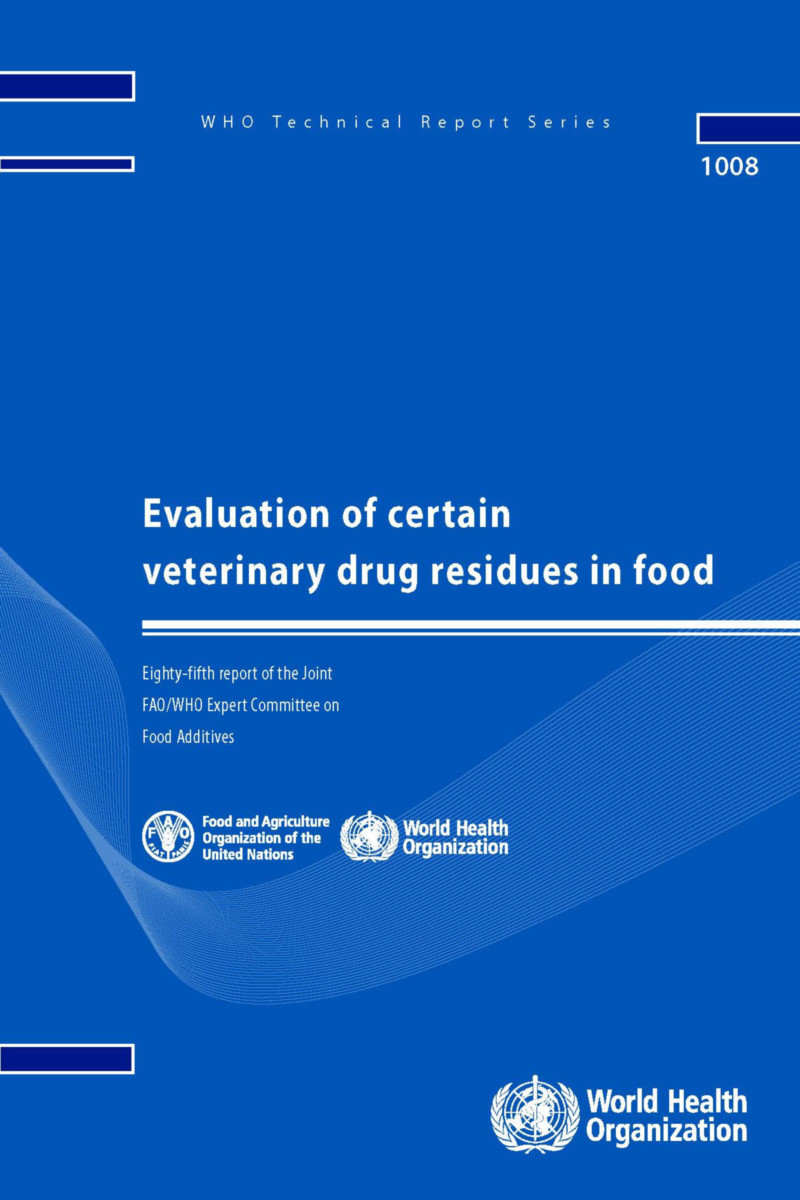Evaluation of Certain Veterinary Drug Residues in Food
Eighty-fifth report of the Joint FAO/WHO Expert Committee on Food Additives
- Publisher
World Health Organization - Published
15th March 2018 - ISBN 9789241210171
- Language English
- Pages 85 pp.
- Size 6.25" x 9.5"
This report represents the conclusions of a Joint FAO/WHO Expert Committee convened in 2017 to evaluate the safety of residues of certain veterinary drugs in food and to recommend maximum levels for such residues in food.
The first part of the report considers general principles regarding the evaluation of residues of veterinary drugs within the terms of reference of the Joint FAO/WHO Expert Committee on Food Additives (JECFA), including chronic dietary exposure assessment of compounds used as veterinary drugs and pesticides, assessment of the relative bioavailability and/or pharmacological activity of incurred drug residues in animal tissues, acute reference doses (ARfDs) for residues of veterinary drugs and methodological approaches and types of data for assessment of veterinary drug residues in food.
Summaries follow of the Committee's evaluations of toxicological and residue data on a variety of veterinary drugs: three antimicrobial agents (amoxicillin, ampicillin and halquinol), an acaricide (ethion), an antiparasitic agent (flumethrin), an insecticide (lufenuron) and an anthelminthic (monepantel). In addition, the Committee considered issues raised by the Codex Committee on Residues of Veterinary Drugs in Foods concerning sisapronil, an ectoparasiticide, and zilpaterol hydrochloride, a ß2-adrenoceptor agonist. Annexed to the report is a summary of the Committee's recommendations on these drugs, including acceptable daily intakes (ADIs), ARfDs and proposed maximum residue limits (MRLs).
World Health Organization
World Health Organization is a Specialized Agency of the United Nations, charged to act as the world's directing and coordinating authority on questions of human health. It is responsible for providing leadership on global health matters, shaping the health research agenda, setting norms and standards, articulating evidence-based policy options, providing technical support to countries, and monitoring and assessing health trends.


